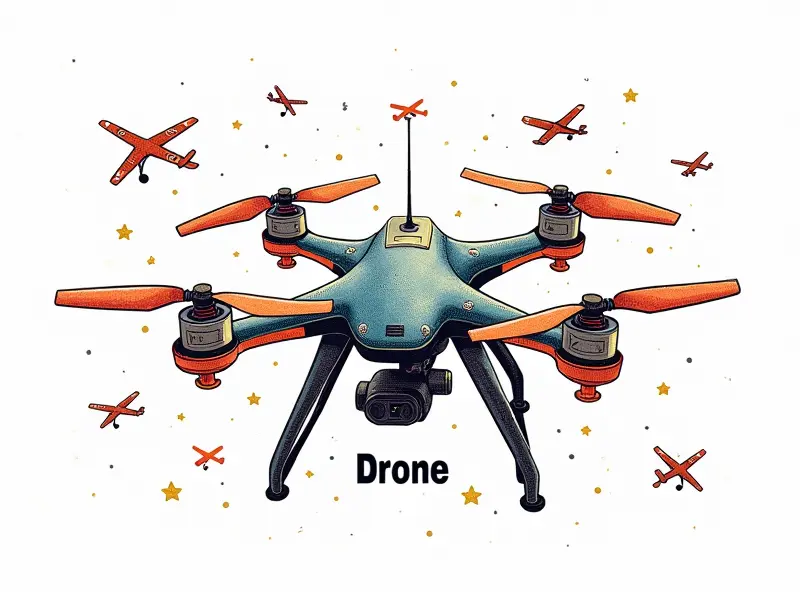How do FPV racing courses work?

Understanding FPV Racing Course Layouts
First-person view (FPV) racing courses are designed to challenge the skills and agility of drone pilots. These tracks incorporate a variety of obstacles, turns, and terrain features that require precise control and quick reflexes. The layout of an FPV race course is crucial for providing an exciting and competitive environment.
Each course is unique, featuring elements such as narrow passages, steep inclines, and tight corners to test the limits of both pilot and drone. Understanding these layouts is essential for mastering the intricacies of FPV racing.
Inside an FPV Drone Race Course
The inside view of an FPV race course offers a glimpse into the complexity and excitement that awaits pilots. These courses are meticulously planned to include diverse elements such as:
- Narrow Passages: Tight spaces designed to challenge the pilot's ability to navigate through confined areas.
- Steep Inclines: Sections where drones must climb or descend rapidly, testing their power and stability.
- Tight Corners: Sharp turns that require quick adjustments in flight direction and speed.
Navigating FPV Racing Tracks 101
Pilots need to develop a keen sense of spatial awareness and control when navigating FPV racing tracks. Key techniques include:
- Pre-flight Planning: Studying the course layout in advance to anticipate obstacles.
- Smooth Transitions: Mastering smooth transitions between different flight modes such as hover, forward flight, and reverse.
- Precision Control: Fine-tuning control inputs to navigate tight spaces accurately.
FPV Racing: What Makes a Great Course?
A great FPV racing course is one that offers a balanced challenge with diverse elements. Key features include:
- Variety of Obstacles: Incorporating different types of obstacles to test various skills.
- Strategic Placement: Placing critical sections at intervals that require thoughtful planning and execution.
- Safety Measures: Ensuring the course is safe for pilots and spectators with clear markings and boundaries.
How Are FPV Racing Tracks Built?
The construction of an FPV racing track involves careful planning and coordination. Steps include:
- Site Selection: Choosing a location that offers the necessary terrain features for a challenging course.
- Layout Design: Creating a detailed plan that includes all obstacles, turns, and elevation changes.
- Safety Checks: Conducting thorough safety assessments to ensure compliance with regulations and minimize risks.
FPV Racing Course Rules & Layouts
The rules governing FPV racing courses are designed to maintain fairness, safety, and competitiveness. Key aspects include:
- Track Regulations: Guidelines on course dimensions, obstacles placement, and flight restrictions.
- Safety Protocols: Procedures for handling emergencies and ensuring spectator safety.
- Pilot Conduct: Rules regarding equipment standards, race conduct, and penalties for violations.
Mastering FPV Drone Race Tracks
Becoming proficient in navigating FPV drone race tracks requires consistent practice and learning. Tips include:
- Practice Regularly: Spend time flying on different courses to build experience.
- Analyze Performance: Review flight data and video footage to identify areas for improvement.
- Seek Feedback: Engage with other pilots to gain insights and advice from experienced racers.
The Ins and Outs of FPV Racing Tracks
To fully understand the intricacies of FPV racing tracks, it's important to delve into the technical aspects. Key considerations include:
- Drone Specifications: Ensuring drones meet performance standards for speed, agility, and stability.
- Sensor Integration: Utilizing advanced sensors like GPS and altitude sensors for precise navigation.
- Flight Gear: Using high-quality goggles and transmitters to enhance the FPV experience.
Navigating FPV Race Courses Like a Pro
Becoming an expert in navigating FPV race courses involves honing specific skills. Focus on:
- Reaction Time: Improving reaction times to respond quickly to obstacles and changes in course conditions.
- Spatial Awareness: Developing a strong sense of spatial awareness to anticipate upcoming sections of the track.
- Tactical Planning: Formulating strategies for navigating challenging sections efficiently.
FPV Racing: Track Rules & Layouts
The rules and layouts of FPV racing tracks are integral to ensuring a fair and safe competition. Key components include:
- Track Design Standards: Adhering to established standards for track design and layout.
- Pilot Requirements: Ensuring pilots meet specific qualifications regarding equipment, experience, and training.
- Race Day Procedures: Following protocols on race day such as pre-race inspections and post-race debriefs.
Inside the World of FPV Racing Tracks
The world of FPV racing tracks is dynamic and ever-evolving. As technology advances, so do the possibilities for track design and competition:
- Innovative Design: Utilizing new technologies to create more challenging and engaging courses.
- Growing Community: A vibrant community of enthusiasts contributing ideas and innovations to the sport.
- Sustainable Practices: Emphasizing sustainability in track construction and maintenance to minimize environmental impact.
Conclusion
FPV racing courses are a testament to the ingenuity and skill of both pilots and course designers. From understanding the intricacies of layout design to mastering navigation techniques, every aspect contributes to an exhilarating experience for participants and spectators alike. As technology continues to advance, the future of FPV racing looks promising with new opportunities for innovation and competition.

